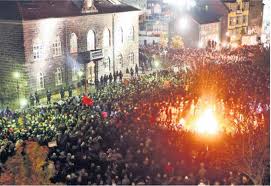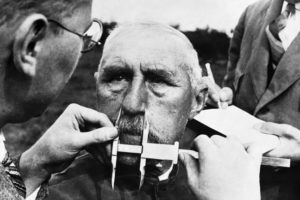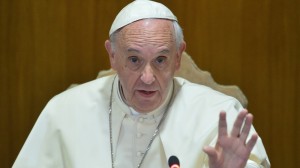This is the first in our three-part series about the revolutionary protests that swept across Iceland which not only resulted in dramatic changes across the country but also has implications for other protest movements taking place across the world.
While protests have erupted across Europe, the Icelandic revolution was unlike any other that has taken place in Europe over the last couple of years.
The economic crash and subsequent austerity measures caused an explosion of anger across Iceland, when citizens were told that they would have to foot the bill for mistakes caused by the banking crisis.
The protests initially started off small, but has since ballooned into mass demonstrations against the status quo. While the mainstream media kept silent, hundreds of thousands of people marched across the country, forcing changes that have been pretty much unheard of in most other European countries which are still recovering from financial chaos.
They forced their government and the head of the regulatory banking authority to resign,several high-profile bankers were arrested and charged in addition to a new Constitution being drawn up.
They also thwarted the proposed ICESAVE bank which would have resulted in Icelandic citizens being made to pay higher taxes because of the fraudulent activity of a few bankers in the country who defrauded overseas investors of thousands of pounds.
The protests achieved widespread support throughout Iceland and despite the gloomy forecasts made by the naysayers and armchair cynics, their economy has now started to recover.
And it all started with the actions of one man. Hörður Torfason is one of the greatest examples of how a single person can kickstart a revolution and change the political landscape of a country.
Torfason is well-known in Iceland. He is an artist, actor, as well as an activist and has been featured in many films and documentaries in the country which shot him to fame in the 70s.
He vowed to take a stand against the government’s austerity measures by sitting outside of parliament every day and demanding change. He also held community meetings every Saturday at 3pm, a practice which he still continues today.
In the beginning he stood alone, before gaining the support of a few people. But before he knew it, tens of thousands of people joined him outside of parliament, because of his persistence.
The government were forced to listen. Akashic Times caught up with Torfason, who gave us an exclusive insight into how and why he was inspired to create change within the country.
He said his aim was to expose and eliminate some of the corruption that was occurring.
He said: “I’ve done things like this before. I am an artist and a citizen and my aim as an artist for the last few decades has been fighting the misuse of power.
“I had sensed a lot of confusion and anger among people. I placed myself there at 12 noon, every day for a week asking two questions. I asked people, ‘Can you tell me what has happened in our country?’ and ‘What can we do about it, do you have any ideas?’.
“This is how I started. It took me three or four days to understand that this would call for a much bigger meeting. So I arranged for a big meeting. I hired a big truck, with sound equipment and I called my friends, intellectuals and artists and asked them to come and make a speech trying to clarify or explain what happened.
“What I did in the beginning is I walked around for three or four weeks and I talked to people and drew up a list of three demands. One was that the government should resign. The second one was that the board of the national bank should resign. The third was that the board of the financial supervisory authority should resign. This came from the people.
“I asked people to surround the parliament building. I was expecting maybe 1,000 people to come and stand there in front of parliament with me, but there were thousands and thousands.
“It took a month more to get the board of the national bank to resign. Once that was done, I stepped back. I then left it up to the parliament or the voters to vote and see what comes out of it.”
The internet also played a pivotal role in getting the revolution started. Although he had a distrust of social media and the mainstream media, which he says are owned by wealthy conglomerates, he managed to rally increasing support via online forums and websites.
He said: “There were a lot of people assisting me, spreading messages through the computers and the internet, debating. I also had a group of people called the Orange Army who supported the idea of a revolution and the three demands. They wore something orange to show that we were peaceful people who used our brains. We did not have violence, and this is how we worked.”
Despite being demonised by the media, the protests continued and received widespread public support.
So what is the situation like now in Iceland? Currently, the new constitution which was drawn up from a panel of 25 citizens in Iceland is still being debated in parliament, which has previously rejected it on technical grounds.
Although their economy is no longer in dire straights and they are doing better than many other European countries, food prices have still increased by over 30 per cent, and people are still in debt.
But Torfason has urged people not to give up. He believes that more fundamental changes are yet to come and is himself an example of just what can be achieved when you persevere.
He should know better than anyone, for it is not the first time he has kicked off a revolutionary movement in the country.
Torfason was one of the first high-profile people to come out as openly gay in Iceland. After receiving many death threats and losing everything he worked so hard to build, he moved to Copenhagen.
Eventually he returned to Iceland and engaged in discussions with people in a bid to create a more equal society. He succeeded.
“I created the gay movement in 1978, it took me three years,” he said: “I never did anything for power or money, this is just my job as an artist to be a part of my society. It was to activate people. I’m good at starting things and getting them running, and when they are running, then I step back and start with another project. The Icelandic revolution was just one of these things.”
He has since given lectures all over the world and is currently involved in spreading this movement across the globe, through motivational talks and discussions. In addition, he has been featured in documentaries and television programmes.
So what are his hopes for the future and what will the final legacy of the revolution be?
“We are having elections on April 27th. The elections will have to take place and people will understand their situation better in Autumn when the new parliament comes together. It takes 10-20 years to change a society, but we have started.
“A lot of people tell me it cannot be done. I always quote something that was written by a man called Lao Tzu who always says “A journey of a thousand miles, begins with a single step.” You have got to start somewhere.”
Akashic Times is the UK’s only online, fully independent not-for-profit weekly newspaper that brings you real news from across the globe.
If you want to keep ahead of what is really going on in the world, subscribe to our newspaper via the subscribe button and join our Facebook & Twitter pages. Subscription is completely free ofcourse
















Follow Us!